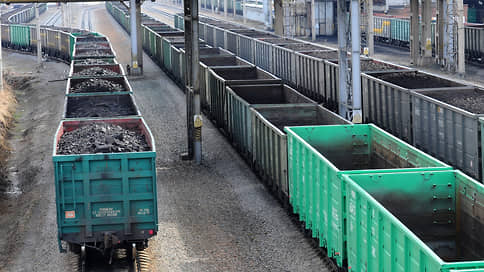Railways plunged into optimism
[ad_1]

In the context of improving the situation with loading in February-March, analysts began to change the forecasts for the results of the years. Thus, IPEM revised its expectations from a drop in loading to an increase of 1.5–2.4%. Russian Railways, whose base forecast assumes a decline of 2.5%, is still more cautious in its estimates, believing that the situation will be determined in the coming months.
IPEM has prepared an updated loading forecast for 2023, seriously revising it. “Instead of the previously expected decline, we forecast an increase of 1.5-2.4%,” Vladimir Savchuk, deputy general director of IPEM, told Kommersant. The revision of the forecast is associated with “unexpected and previously unpredictable, promptly occurring positive factors,” he specified.
Firstly, the expert explained, the state promptly allocated funding for the construction of roads in December last year, which is much earlier than usual. “As a rule, this happened not earlier than spring, and the transportation of building materials became more active closer to summer,” says Mr. Savchuk. “And now we see an increase in their loading by 17.5% in the first quarter compared to the same period last year. In some months, for example, in February, the growth was 30%, and now it will continue.”
Secondly, coal mining companies were able to overcome the logistical difficulties that arose due to sanctions much faster than one could expect, and coal “went”. So, in February, an increase in export traffic to the ports of the North-West by 26% was recorded, says Mr. Savchuk, the Murmansk port reached 100% load. The third driver of cargo handling growth will be grain, whose traffic volumes “grow without surprises”.
Loading on the network in February-March increased by 0.2% (see Kommersant of March 1 and April 3). Grain, containers and construction cargo grew steadily, and coal transportation began to show positive dynamics. But Russian Railways itself has not yet officially changed its forecast, which is 1,203.6 million tons at the end of the year, or minus 2.5% compared to 2022. But the monopoly admits that since February they have observed a “positive trend” in loading: “We expect that, contrary to negative forecasts, it will continue. We hope this will allow us to revise the annual forecast for the better. Indicative in this regard will be the coming months. We look at the applications of shippers.
Pavel Ivankin, president of the National Research Center for Transportation and Infrastructure, says that the center initially predicted “zero or positive loading dynamics” for this year. First, he explains, there is a delayed base effect that formed in the fourth quarter for coal as a result of non-export of part of the raw materials already mined and stored in warehouses due to the launch of additional container trains at the Eastern landfill: these volumes should be exported this year, and , “as March shows, even the introduction of DMZI (a dynamic model for loading infrastructure, a new experimental method for coordinating applications; see Kommersant of March 24) does not affect loading indicators.” Secondly, logistics routes have been established. In general, says Mr. Ivankin, 1.5-2% growth is the “minimal optimistic” forecast.
The head of Infoline-Analytics Mikhail Burmistrov, like IPEM, improved expectations for the year. According to him, the growth rate could be even higher than 2.5%, “if the situation on the network would be at least the same as before the outbreak of hostilities in Ukraine.” But “the situation is extremely difficult and continues to deteriorate,” the expert emphasizes.
Part, albeit insignificant, of the contribution to loading is operations with a “tariff break”, when the shipper is forced to first transport cargo to railways closer to the east, where there are still quotas for China, and then from there directly to China, generating a double load , explains Mr. Burmistrov. Or the transportation of empty containers to the ports of the Far East and the South, since sending empty platforms there is impossible, he adds. However, the expert notes, this is a small share, and in general, the growth in loading is largely due to the weakening of the ruble, which allows exporters to feel more comfortable. At the same time, Mikhail Burmistrov clarifies, the risks of reorientation of shippers from the railway to motor vehicles are increasing.
[ad_2]
Source link





